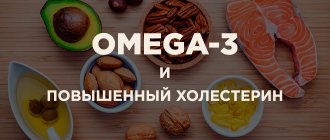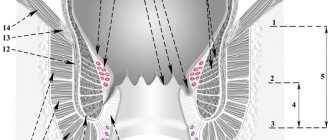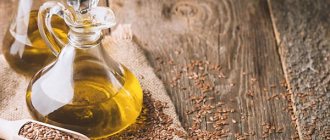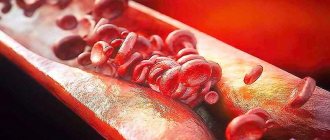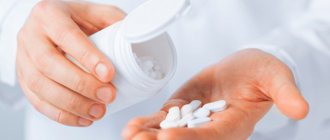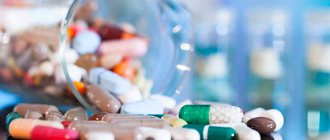Why do you need fish oil?
Chemically, marine fish oil is a concentrate of oleic, palmitic and stearic acids, supplemented with compounds of sulfur, phosphorus, magnesium, zinc, vitamins A and D. Fatty acid complexes known as Omega-3 and Omega-6 regulate lipid metabolism and the production of most vital hormones. They come inside only with food, requiring constant replenishment of supplies from the outside.
Fish oil ensures the normal functioning of the central nervous system, improves thinking abilities and memory, and prevents the degeneration of nerve tissue. High levels of fatty acids guarantee:
- release of the required amount of serotonin and other “happiness hormones”;
- normal blood fluidity;
- decreased levels of stress hormones;
- removal of low-density cholesterol;
- protecting the body from malignant degeneration of cells, excess fat deposits, atherosclerosis and cardiovascular pathologies;
- health of skeletal tissues, muscles, joints, skin, hair and nails.
Not everyone can afford a diet rich in fish every day. In addition, this product often causes allergic reactions. Poor nutrition causes a deficiency of Omega-3 and Omega-6 acids. And their chronic deficiency gives impetus to the development of severe disorders.
Overdose and side effects
Fish oil lowers cholesterol, but it can also cause a number of side effects:
- stool disorder;
- flatulence;
- belching with a fishy taste;
- the appearance of rashes;
- change in heart rate.
If the recommended dosages are followed, side effects rarely occur, and only in cases of individual sensitivity to the active substance. In this case, you need to consult a doctor to change the drug, release form or adjust the daily dose.
Often patients, guided by the fact that fish oil reduces cholesterol levels in the blood, begin to exceed the recommended amount to achieve a quick effect. Such self-correction can lead to an overdose. Fish oil thins the blood, which increases the likelihood of bleeding. An overdose may also cause chest pain, an allergic reaction, or a feeling of heat or chills. If such signs appear, you should immediately consult a doctor.
Fish oil preparations
Pharmaceutical forms of fish concentrate are produced to enrich the diet of children and adults with important fatty acids. For production, the liver and muscle tissue of cold-water species are used: cod, herring, mackerel or salmon. The drug is released in the form:
- oil solution: yellowish-transparent, slightly viscous, with a characteristic fishy odor, packaged in glass bottles with a capacity of 50, 100 ml;
- capsules: gelatin-coated, containing 500 mg of fish oil.
As auxiliary compounds, the drug contains glycerin, sorbitol, and distilled water. Many children's medications contain berry or fruit flavors.
Low-cholesterol diet as prevention of cardiovascular diseases
Cholesterol is a lipid (fat-like substance), the main part of which is produced in the liver, and the rest comes from the environment through food.
The functioning of the body without fat cholesterol is simply impossible. He is the one who helps:
• Strengthen cell membranes, making them elastic. • Produce various hormones, including sex hormones - estrogen and androgen. • Absorb vitamins A, D, E and K. • Produce bile. • Isolate nerve fibers.
Cholesterol is important for the normal functioning of the immune, nervous, and digestive systems, but if there is more of it in the blood than is required for normal life, cholesterol is gradually deposited on the inner walls of the arteries. This is how an atherosclerotic “plaque” is formed - a thick, dense formation that narrows the vessel and reduces its elasticity. This process of formation of such plaques is called “atherosclerosis.” After some time, a blood clot may form at the site of the atherosclerotic plaque, which completely clogs the vessel and cuts off the supply to vital organs. Blockage of the vessel supplying the heart leads to myocardial infarction; blockage of a vessel supplying the brain - to a stroke.
Cholesterol does not dissolve in the blood. Transporters called lipoproteins are used to transport it from cell to cell. High-density lipoprotein (HDL) cholesterol helps carry cholesterol from the arteries to the liver and then eliminate it from the body. HDL cholesterol is called “good” cholesterol: high levels protect against heart disease. The lower the HDL level, the higher the risk of cardiovascular disease. Low-density lipoprotein (LDL) cholesterol, on the other hand, transports cholesterol from the liver to body cells. It is the excess LDL cholesterol that can deposit in the arteries and form atherosclerotic “plaques.” The lower your LDL level, the better. There is another form of lipids whose levels need to be monitored: triglycerides.
The following average values can be considered as a normal lipid profile in adults:
• atherogenic coefficient - less than 3. • TG level - 0.3 - 1.7 mmol/l; • HDL level – not lower than 1.0 mmol/l; • LDL level - 1.2 - 5 mmol/l; • total cholesterol - 3.4 - 5.2 mmol/l. These lipid profile values reflect the norm for middle-aged men.
There are 2 types of high cholesterol:
• Primary or familial/genetic hypercholesterolemia (caused by gene damage and transmitted from father/mother); • Secondary (nutritional or due to concomitant diseases).
To make a diagnosis it is necessary:
• undergo examinations; • discuss lifestyle changes with your doctor; • decide on reduction tactics.
To reduce cholesterol levels, you need to:
1) Change your diet 2) add moderate physical activity, reduce body weight (BMI < 25 kg/m2), 3) eliminate bad habits (quit smoking, alcohol).
If you have chronic CVD (coronary heart disease, hypertension, have had heart attacks, strokes), then cholesterol-lowering drugs are prescribed immediately with lifestyle correction - a dose is selected, a group is selected, most often these are statins, and then after all recommendations are followed, cont.
Basic principles of the hypocholesterol diet (table No. 10)
Limiting fat intake
• Saturated: palm oil, mayonnaise sauces, visible fat on meat products, sausages, margarine - exclude; • Monounsaturated: oleic acid (olive, corn, peanut oils) pork, beef, lamb - limit; • Polyunsaturated (PUFA): linoleic acid contained in sunflower, corn oils, sea fish - increase in the diet;
Reducing the consumption of saturated fat and increasing PUFAs have been proven to reduce the risk of developing coronary atherosclerosis.
Limiting cholesterol intake from food
• Representatives: egg yolks, kidneys, liver, full-fat sour cream, cheese, milk; • No cholesterol in vegetables, fruits, grains; • Increasing the consumption of complex carbohydrates and reducing the amount of easily digestible carbohydrates (sugar);
Complex: dietary fiber (fiber, pectin). Pectin: black currants, apples, plums, carrots, cabbage, oranges. Fiber: oat bran, flakes and flour, peas, beans, vegetables. Easily digestible: honey, jam, condensed milk, confectionery and bread.
It has been shown that people whose diet consists of vegetables, grains and other complex carbohydrates tend to have lower rates of CVD. • Increasing the proportion of plant proteins (legumes and mushrooms) in the diet (at least 50%) in relation to animals.
The main goal of a diet for high cholesterol is to reduce the amount of animal fat. This, in turn, brings cholesterol levels within normal limits. Medical experts highlight the basic rules for the 10 dietary table:
• reduction of sugar-containing foods in the diet; • reducing the consumption of fat and fried foods; • use vegetable fats instead of animal fats; • predominance of fish products on the menu; • reducing the number of meat dishes (each serving should contain no more than 100 grams of meat); • removing fat and skin from meat before cooking; • inclusion of more vegetables and fruits in the diet, with the exception of potatoes and beans; • preparing porridges from all grains that cannot be processed; • maximum exclusion of alcohol and salt.
The list of prohibited foods in the diet includes:
• baked goods and sweets (chocolate, peanut butter, toffee candies, honey, marmalade, syrups, sugar and fructose, marshmallows, ginger and sugared peanuts); • fish, fatty meats in their pure form and broths prepared from them; • caviar, canned food and smoked meats; • pasta, semolina porridge; • cocoa and coffee.
When purchasing products, you should pay attention to hidden fats contained in pork fillets, beef, carbs, ribs and pieces of carcass with a visible amount of fat. Processed meat in the form of ham, sausage, and frankfurters contains a lot of cholesterol. Don't overuse eggs.
Table No. 10 suggests consuming no more than 2 pieces per week. Cholesterol is found not only in sugar, but in all sugar-containing foods. A hypocholesterol diet for men and women, aimed at reducing their amount, excludes cheeses, fatty sour cream and yoghurts, and butter, since they usually have a lot of sugar added. If there is a high level of cholesterol in the blood, it is necessary to completely exclude from the diet processed foods, industrially produced baked goods and fast foods, which contain trans fats and a large amount of saturated fat.
Table of foods containing cholesterol
| High cholesterol content | Lower Cholesterol Alternative |
| Fatty pork | Turkey, white meat chicken |
| Liver, lung and brains | Fish (mostly sea) |
| Squid, shrimp | Mussels |
| Egg yolk | Egg white |
| Caviar black and red | Fruits and vegetables |
| High fat sour cream, cheese | Low fat yogurt |
| Pastries, cakes, biscuits | Oatmeal cookies |
| Butter, lard | Vegetable oil |
Allowed products: According to nutritionists, cereals have beneficial substances. To season porridge, you should not use butter or cook it with milk with a high percentage of fat content.
Cholesterol is absent from vegetable fats. You can eat berries, vegetables and fruits. A diet for high cholesterol allows the use of self-prepared fruit juices and compotes without added sugar.
Table of products table No. 10
| Cereals and baked goods | Oatmeal and cookies, products using wholemeal flour, pasta only made from durum wheat, low-fat puddings, unpolished rice |
| Dairy | Skim or low-fat milk, kefir, cottage cheese, yoghurts, light low-fat cheeses |
| Fish and seafood | Sea fish dishes |
| Fats | Olive oil, soybean oil, sunflower oil, corn oil |
| Vegetables and fruits | Frozen, fresh vegetables and fruits, almonds and walnuts are allowed in small quantities |
| Meat | Turkey, veal, rabbit and chicken without skin |
| Soups and broths | Vegetable or soups with 2 meat broth |
| Spices | Natural seasonings and herbs, mustard, vinegar |
| Sweets | Popsicles, jellies, products without added sugar |
Foods to lower cholesterol:
A cholesterol-lowering diet allows you to include in your usual diet foods that help lower cholesterol. For example, these include:
• Broccoli, avocado. Broccoli is rich in dietary fiber, which reduces cholesterol levels in the blood. All food containing coarse fiber is not absorbed by the intestinal walls, envelops processed food and removes it from the body. Thus, accelerating intestinal motility makes it possible to reduce the amount of cholesterol ingested in foods by approximately 15%. You should consume at least 400 grams of broccoli every day. • Oyster mushrooms. Oyster mushrooms contain a statin, so they are analogues of medications. They reduce cholesterol synthesis in the body and stop the formation of new plaques in blood vessels. The daily requirement for oyster mushrooms is at least 9 grams. • Herring. Herring contains a large amount of Omega-3 fatty acids, which, when the ratio of protein carriers changes, reduces the cholesterol value. It is enough to consume at least 100 grams of herring per day to restore lumen in blood vessels and remove fat and cholesterol from plaques.
Example of a daily menu: A diet for high cholesterol and sugar allows you to combine various products, so creating a tasty and healthy menu is quite simple.
Example of ready meals for the day:
• breakfast: buckwheat porridge seasoned with olive oil, tea without sugar; • snack: apple; • lunch: chicken soup with 2 broths, baked fish with vegetables, pomegranate juice; • afternoon snack: low-fat cottage cheese; • dinner: boiled potatoes, herring, tea without sugar.
Compliance with the diet according to the diet increases the body's endurance, improves
feeling and general state of human health.
When should you take fish oil?
Active growth, conditions after long-term illnesses, physical or nervous exhaustion, old age are critical periods, the deficiency of Omega-3 or Omega-6 is especially acute. You should also take fat supplements:
- with a lack of vitamins A, D and E;
- frequent respiratory infections;
- eye diseases: conjunctivitis, hemeralopathy, keratitis;
- erosive processes in the urinary system, gastrointestinal tract;
- for long-term non-healing ulcers, skin lesions, fractures;
- deterioration of the condition of teeth, musculoskeletal system, hair;
- for the prevention of excessive thrombus formation, atherosclerosis, rickets;
- in complex therapy of endocrine diseases.
Indications for high cholesterol
The drug is prescribed in the following cases:
- prevention and treatment of atherosclerosis;
- prevention of relapses after myocardial infarction;
- complex therapy of pathologies that are accompanied by an increase in the level of LDL in the blood;
- relief of ischemic lesions of the heart and brain against the background of previously diagnosed atherosclerosis.
Note! For prevention, fish oil can be prescribed if there are cases of atherosclerosis in the family or clinical history.
How to take fish oil solution
The liquid drug is approved for therapy from the age of 3 months. The solution rarely causes side effects and is well tolerated by most people. It has one drawback - the smell of fish. For those who cannot tolerate it, it is better to choose capsules.
It is optimal to drink fish oil along with meals or a few minutes before meals. Better - during breakfast. The dose is calculated depending on age. General recommendations:
- children under 1 year: ½ tsp. in a day;
- children 1–2 years old: 1 tsp. solution;
- at 2.5–3 years you can increase the volume to 2 tsp;
- from 3 to 6 years old, take 1 dessert spoon of fish oil;
- Children over 7 years old and adults are allowed to drink 1 tbsp. l. medications per day.
In the presence of serious diseases, the dosage regimen and duration of therapy are selected by the attending physician.
Contraindications for high cholesterol
Taking fish oil for high cholesterol levels is not recommended if the patient has a history of the following indications:
- sensitivity to fish products;
- cholelithiasis and/or urolithiasis;
- increased levels of calcium in the blood;
- formation of calcifications in tissues;
- disorders of the thyroid gland;
- chronic gastrointestinal pathologies in the acute stage;
- active form of tuberculosis.
Under the strict supervision of the attending physician, omega is prescribed in the following cases:
- pregnancy and breastfeeding;
- decreased blood clotting;
- low blood pressure;
- taking oral contraceptives, antiplatelet agents, antihypertensive drugs.
Benefits for the body
Direct indications in the instructions for use of fish oil are:
- hyperlipidemia;
- prevention of atherosclerosis, vascular thrombosis.
However, if used correctly, one can also attest to some of its key advantages:
- it lowers blood pressure;
- suppresses inflammatory processes;
- prevents degenerative changes in the retina;
- activates cerebral blood flow;
- improves connections between neurons;
- promotes the development of muscle mass during physical education;
- stimulates the synthesis of a natural antidepressant - the hormone serotonin;
- optimizes reproductive functions of both sexes.
Its general effect on the body is manifested in strengthening the immune defense.
